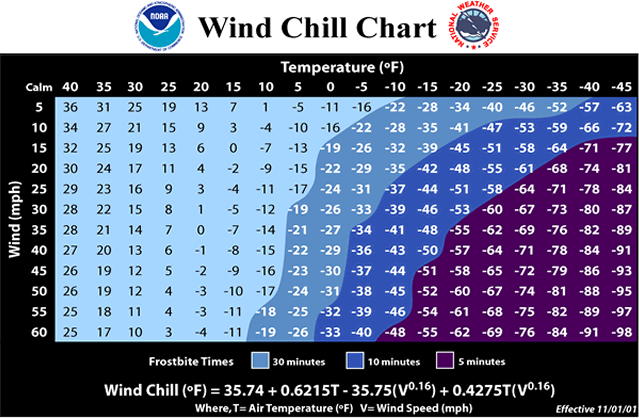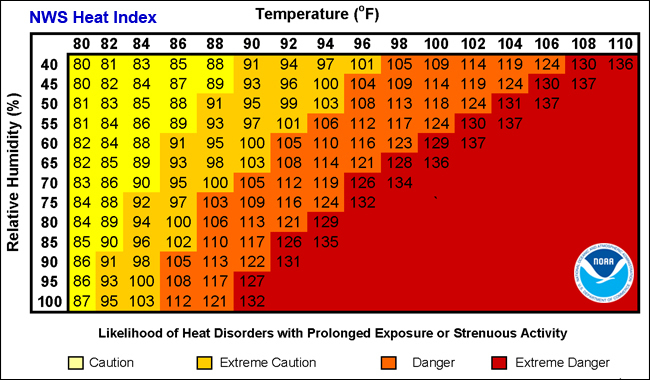Extreme Temperature

BRADD’s Hazard Mitigation Plan focuses on both Extreme Cold and Extreme Heat as hazard events. Information on both aspects of extreme temperature can be found below.
Extreme Cold/Cold waves occur in the winter months, particularly during December and January. Typically, there a 24+ hour warning time before a cold wave moves into an area.
Extreme Heat/Heat waves occur in the summer months and can typically be predicted a few days in advance through weather monitoring.
Extreme Cold
Wind Chill Index
The wind chill index is frequently used to alert the general public to the dangers of exposure to the cold. This index was originally developed by American explorers and geographers Paul Siple and Charles Passel when they were exploring the Antarctic in the 1940s. The researchers hung bottles of water outside of their camp to determine how long it took the water inside to freeze under certain wind conditions. Their observations were translated into the wind chill index used by the National Weather Service and meteorologists to convey in a way that is understandable to the public how the temperature feels. The index combines wind speed and temperature to measure their combined effect on the human body.

Wind Chill Safety
A wind chill warning will be issued when wind chill temperatures are expected to reach -10°F or colder with a minimum wind speed of about 10 mph.
Extreme Heat
Extreme Temperature/Heat waves occur in the summer months and can typically be predicted a few days in advance through weather monitoring.
A heat wave is a space of unusually hot temperatures for a given amount of time for an area. For the BRADD region, any streak of temperatures above 90 degrees gives way to a potential heat wave. Usually accompanying a heat wave is drought, an extensive span of time with little to no rainfall that totals far below the norm.
The NWS’s heat alert procedures are based mainly on Heat Index Values. The Heat Index is a measure of how hot it feels when relative humidity is factored in with the actual air temperature.
The National Weather Service offers the following alerts for heat safety:
- Excessive Heat Warning: the maximum heat index temperature is expected to be 105° or higher for at least 2 days and night time air temperatures will not drop below 75°.
- Excessive Heat Watches: Heat watches are issued when conditions are favorable for an excessive heat event in the next 24 to 72 hours. A Watch is used when the risk of a heat wave has increased but its occurrence and timing is still uncertain.
- Heat Advisory: The maximum heat index temperature is expected to be 100° or higher for at least 2 days, and night time air temperatures will not drop below 75°.
- Excessive Heat Outlooks: The outlooks are issued when the potential exists for an excessive heat event in the next 3-7 days.
